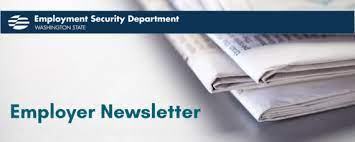WA Cares Fund Employer Newsletter
Written by Steve Cain, CLTC®, Director Sales & Business Development Leader | Read
Employers to begin deducting WA Cares premium July 1st
What you need to know about premiums, exemptions, and more
Beginning July 1, 2023, you must collect WA Cares premiums from your employees’ wages and report their wages and hours at the end of each quarter—much like you do now for Paid Leave. Reporting will begin Oct. 1, 2023, and will follow the same reporting process as Paid Leave. There is no employer share of WA Cares Fund premiums.
For more info about your responsibilities as an employer as well as resources you can use to communicate with employees and answer questions about the program, please visit wacaresfund.wa.gov/employers.
Calculating premiums
Calculate the total premium amount for each of your employees. The premium is 0.58% of an employee’s gross wages, so: Gross wages x .0058 = total premium for employee.
Note that unlike Paid Leave, premium contributions are not capped at the taxable maximum for social security. Need help determining premium amounts for WA Cares and Paid Leave? Check out our premium calculator at paidleave.wa.gov/estimate-your-paid-leave-payments.
Employee exemptions
Some employees may choose to apply for an exemption from WA Cares coverage. It’s their responsibility to apply and — if approved — to notify you and give you a copy of their approval letter from ESD.
Once notified, you must:
- Not deduct WA Cares premiums from the wages of employees who give you an ESD exemption approval letter. Note: this letter will list the date the employee’s exemption takes effect.
- Keep a copy of your employees’ approval letters on file.
ESD is currently processing a high volume of exemption applications. We are doing our best to process applications as quickly as possible but we will not be able to address all applications before you are required to begin withholding premiums on July 1.
Approved exemptions from workers who submitted their applications before July 1 will have an effective exemption date of July 1, 2023, regardless of when their application is approved. In some cases, this may mean you will be deducting premiums from workers' wages before they are able to provide you a copy of their exemption approval letter. Once they provide their exemption approval letter, we encourage you to return their deductions at your earliest convenience since ESD will not assess premiums for these workers for any part of Q3.
Workers who submit exemption applications on or after July 1, and are approved, will be issued an effective exemption date starting the quarter following the date the exemption was approved, and will be assessed premiums for all of Q3.
For conditional exemptions, it is the employee’s responsibility to notify you and ESD within 90 days of any changes to their exemption status. Failure to do so can result in employees having to pay past premiums and additional penalties.
For employees who previously applied for a private insurance exemption and received an approval letter from ESD, their exemption is still valid.
For more information on employee exemptions, visit wacaresfund.wa.gov/exemptions.
What workers need to know
WA Cares is designed to help workers live independently in their homes as long as possible. By contributing a small amount of each paycheck while working – less than a dollar a day for the typical worker – they’ll be able to access services like professional in-home care, making a loved one a paid caregiver, home safety modifications, meal delivery, transportation and more.
To prepare for the program’s launch, workers can:
- Learn program basics and calculate their contribution. Find more details on how the program works, including a worker contribution calculator with new features, on the recently updated WA Cares Fund website.
- Get up to speed on program updates like benefits for near-retirees. Last year, the program added a new pathway for people who are near retirement to earn partial benefits for each year they contribute to the program.
- Research exemptions — and if they qualify and want an exemption, they need to apply and provide their approval letter to their employer. Exemptions for workers who have private insurance policies are no longer available, but four new types of exemptions are available on an ongoing basis. These new exemptions include conditional exemptions for workers who are a spouse/registered domestic partner of an active-duty U.S. armed forces member, work in Washington but live out of state, or have a temporary non-immigrant visa (including H-2A and H-1B visas). These exemptions are only valid as long as workers continue to meet the exemption criteria, and if they no longer qualify they must notify their employer and ESD within 90 days. There is also a new permanent exemption for veterans with a 70% or higher service-connected disability. They must apply to the Employment Security Department (ESD) to get an exemption and provide their approval letter to their current and future employers.
